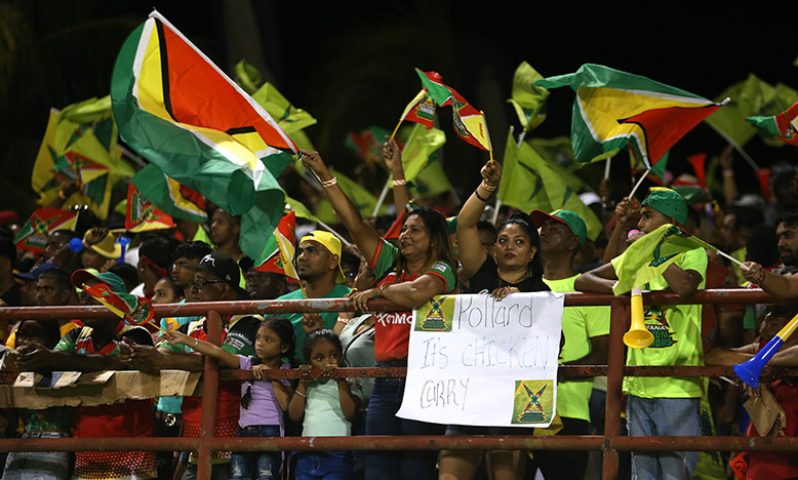By Vishnu Bisram
THE Guyanese diaspora maintains and sustains connections with the homeland and ever since they left, they have maintained connectivity, seeking to help families if not the country as a whole. In seeking to help families financially, the country as a whole also benefits. They maintain links to cricket that also helps with cricket development in Guyana. The diaspora from North America and the Caribbean descended on the Providence Stadium for cricket that was staged last week (Wednesday thru Friday of this week) that was a major boost to the economy. Non-Guyanese also came to watch cricket, to support their teams.
Their presence would have boosted the economy by some 10 times in terms of value of economic activities, not to mention the spread effects and circular flow of money, which is estimated by economists to be at least five times that spent. The sport entrepreneurship and diasporan financial support contributed to or stimulated the economy in a way that was never contemplated or happened before. The games were hyped up, and Guyanese came down in large, perhaps record, numbers. The Guyanese diaspora take cricket seriously. And there were a lot of emotions expressed at the games by local Guyanese, as well as by the diaspora.
By far, the Guyanese visiting cricket enthusiasts from America outnumbered all other groups. In no other regional territory has the diaspora of a fellow CARICOM nation, returned home with so much excitement and enthusiasm for cricket. The first four nights of play did not disappoint as Guyana won all its matches. But the two playoff games were a major disappointment as Guyana was humiliated, getting knocked out of the competition.
The diaspora’s presence has been a financial bounty for the Amazon Warriors, the CPL, and the national economy as a whole. Match tickets were sold out. Diasporans experienced difficulties to obtain tickets just like locals, with some unable to get into the stadium because of lack of tickets. Scalpers had a field day in some matches, although some reported losses in the first two matches. Hotels were fully booked without a room to spare. Many guests had to stay at the homes of relatives or at bed and breakfast facilities of private homes. Restaurants, bars, clubs, night spots, hang-out joints, fast-food outlets, cottage catering, and other eateries did brisk business. Taxis and other transport businesses also did well during the last two weeks.
And families got huge handouts from generous relatives and friends. Airlines also benefitted – with diasporans from the Caribbean region and from North America purchasing tickets at relatively high prices for off-season travel to come to Guyana. A lot of money was spent on parties, spirits, food, jerseys, paraphernalia, etc. Parties or fetes have been planned post competition that would also result in more spending. Large amounts of money in the millions of US dollars may have been collected in taxation.
Sports, cricket in particular, is the most followed event in Guyana. Over the last two decades, cricket has become commercialised. It has become a business and has relied on entrepreneurship (sponsorship, as well as patronising of games) to ensure its survival, as well as its competitiveness. The Guyanese diaspora, indeed all Caribbean diasporas, is highly active in cricket in their country of adoption – the US, Canada, etc. But Guyanese in particular came down from the USA in record numbers to support the Amazon Warriors. They don’t follow teams in USA and Canada as they do in Guyana and other territories. In fact, most Guyanese in America or Canada don’t know their local teams or players and few actually go out to watch the games played from May thru early October. Cricket is played in every area where Guyanese, Caribbean people, and South Asians are concentrated, such as in far-away Minnesota, Texas, Georgia, South Carolina, Washington DC/Maryland, Illinois, Washington State, British Columbia, etc., and of course the New York, New Jersey, Connecticut, and Pennsylvania, and Toronto and other parts of Ontario Province.
Cricket is earnestly followed all over the US and Canada and players and fans followed West Indian cricket, including the CPL; they also go crazy over the IPL in India. Social networks of North American cricket fans and local teams may have caused or encouraged many to come down to Guyana. Thus, it was not surprising that many Guyanese and CARICOM people came down for the matches at Providence because they love to see certain cricketers in action. The number of Guyanese who came down for cricket is not known, but it would be in the thousands. There were also some “Trinis” who came from North America as well as from Trinidad. They were seen at the stadium waving flags and dressed in Knight Riders jerseys. Indian nationals from the US also came for the games. At least three teams, Barbados, Trinidad, and St. Lucia, are owned by Indian nationals. Two (Guyana and Jamaica) teams are owned by Guyanese. This would have boosted entrepreneurialism around cricket and business activities related to the stadium matches.
While it is not known if the CPL has been a major financial success as say similar games staged in India, Australia, New Zealand, UK, etc., the presence of the diaspora and their spending had a major impact on the economics or businesses (food, entertainment, beverage, transport, etc.) tied to staging of the games in Guyana, as well as aiding the airlines that traverse the Guyana route.


.jpg)











